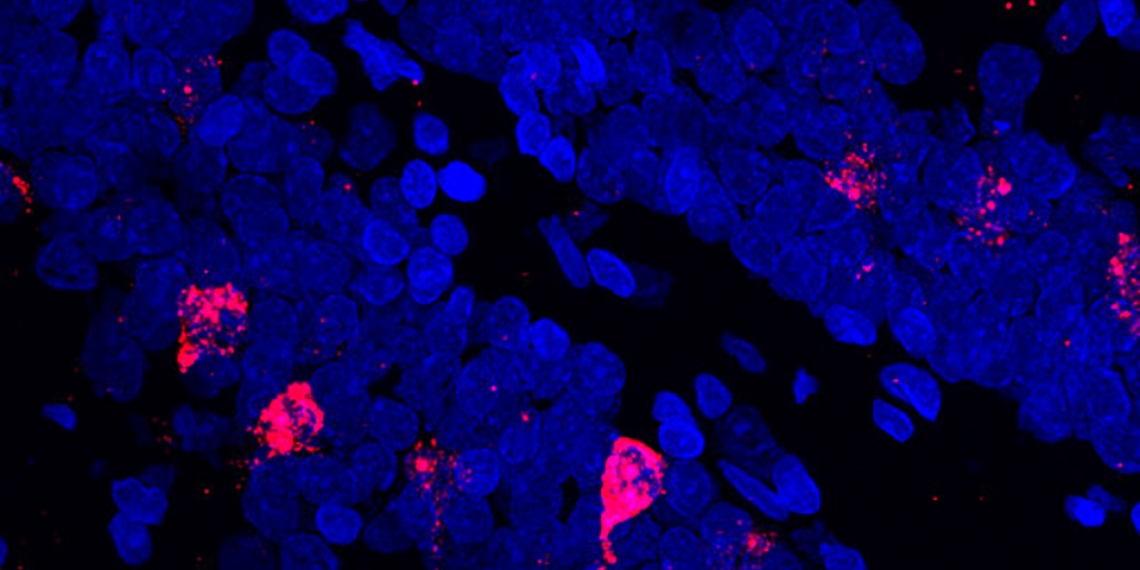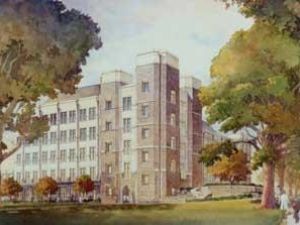SINS faculty, postdocs, and graduate students seek to examine the complex interplay among the brain, behavior and environment, utilizing multiple levels of analysis. These include behavioral, electrophysiological, pharmacological, cellular, genetic, molecular, circuit, and neural-network model approaches.
The areas of interest of our faculty include: social and motivated behavior; social and emotional interplay at the neural circuit and behavioral systems level, midbrain dopaminergic reward systems; hypothalamic neural circuits for homeostasis and social behavior; sex-specific changes in social and motivated behavior; neuroimmune interactions and behavior; early-life experience and maternal care; cognitive development and aging; neural basis of vision and audition including multisensory and sensorimotor integration; sex differences in brain and behavior; nutrient and hormonal modulation of learning and memory across the lifespan; and the roles of the basal ganglia in goal-directed behavior.
Additional Information
NOTE: Our program has made the GRE General Test optional for admission to the fall 2025 class. You may submit scores if you have them, and they will be considered by the admissions committee. Applications without GRE scores will be given equal consideration.
Faculty from other areas of P&N or other departments may be involved in some way in graduate student training. However, only the following faculty are likely to accept applications for review to admit Ph.D. students directly to this training program for Fall 2025:
- Faculty will be posted fall 2024
If you wish to be in the SINs area but your desired mentor does not appear on this list, please contact your desired mentor directly.
Active research participation is central to the Ph.D. program in Systems and Integrative Neuroscience (SINS). Students are accepted into the program under the guidance of a specific faculty member, and work closely with them for the duration of the program. Collaboration with other students or faculty from within and outside the department is also strongly encouraged. The training program is flexible, and is tailored to meet the specific needs of each student.
Requirements
Requirements for the Ph.D. include:
- First Year Seminar (fall and spring of first year)
- Breadth Course offered by P&N (fall and spring of first year)
- Completion of one statistics or computational course
- One additional course in neuroscience: usually Concepts in Neuroscience, Behavioral and Computational Neuroscience, or any class outside the area considered relevant to the student's research area
- Participation in seminars relevant to the field of research
- Successful completion of a major area paper and oral qualifying examination (preliminary exam)
- 4 semesters of TA experience
Most students complete the Ph.D. within 5-6 years. Students can expect to receive extensive training in basic brain and behavioral sciences, as well as a core foundation in statistical and data analysis methods that will prepare them for a research-focused career in academics or industry.
Advanced research techniques available include:
- in vivo calcium imaging using 1-photon miniscope;
- in vivo calcium imaging using 2-photon microscopy;
- Light-sheet microscopy;
- Behavioral Optogenetics and Chemogenetics
- Whole-brain and Whole-organ tissue clearing + iDISCO;
- Neuroanatomical mapping (rabies virus);
- Immunohistochemistry (multiple label light and fluorescence);
- Confocal microscopy and stereology;
- Hormone manipulation and estrous cycle monitoring;
- ELISA and multiplex protein analysis;
- Flow cytometry;
- Quantitative real-time PCR;
- Immune and glial cell cultures;
- Pharmacological assays including self-administration;
- Fast-scan cyclic voltammetry, and microinjection techniques;
- Electrophysiological recording in vivo and in vitro
- Eye tracking
- Ear canal recordings with microphones
- And a wide-variety of advanced behavioral assays, including those for learning and conditioning, memory, spatial navigation, anxiety, social communication and social interaction, operant responding, innate and learned motivated behaviors (feeding, social), odor-driven behaviors, combination of naturalistic and conditioned behavior assays, reward/aversion learning, maternal care, and psychophysical/multi-dimensional analysis of auditory and visual integration. Both automated computer vision and deep-learning and machine learning for quantitative measures of behavior.
See Admitting Faculty for a list of faculty who are currently recruiting students
Visit our department's application page for more information on how to submit an application to our graduate training program.
SINS core faculty are located in three buildings, the Genome Science Research Building, the Levine Science Research Center, and the Vivarium.
The Genome Science Research Building 2 (GSRB2; pictured at right) is home to to 3 core faculty (Bilbo, McHenry, & Yin). The third floor (21,444 gross sq. ft.) is a state-of-the-art facility for the study of brain and behavior using small animals as subjects. Experimental rooms for behavioral analysis are equipped with radial-arm and water and Barnes' mazes, activity boxes, startle, and operant conditioning chambers for study of cognitive processes in small rodents. All behavioral test areas are soundproofed and are across the hall from animal housing. There are video-tracking systems in several of the procedure rooms that allow continuous recording in both light and dark phases of the day; computer programs allow for automated collection and analysis of maze and operant data. Home cage wheel running and general activity can be monitored remotely. Wet labs for analysis of RNA, DNA, and immediate early genes, as well as fully equipped histology suite, and several electrophysiology rigs are also available. Each lab also has a wide assortment of equipment available for behavioral, molecular, and imaging procedures.
Laboratory space: includes desktop computers for each graduate student and offices for postdoctoral fellows. Communal labs available to faculty and Trainees include:
- Surgical suite: designed for small animal surgeries and perfusions. It includes a biosafety hood, chemical hood with sink, 2 surgical stations for use with injectable or gas anesthesia, and an anti-room with refrigerator, ice machine, sink and counters for preparing animals for surgery.
- Histology: houses standard hooded sink and a vented work station, as well as a radioisotope hood for assays, fully equipped with standard stirrers, shakers, balances, vibratome, microtome, cryostat.
- Image analysis: Features 2 Nikon microscopes with video image analysis capability as well as stereology software (Stereologer, Microbrightfield, Inc.) attached to a motorized stage and high resolution video camera. An Olympus epifluorescence microscope is also available.
- Electrophysiology suites: equipped with a Plexon recording system for sleep analysis, single or ensemble recording studies,
- Molecular biology suite: used for analysis of RNA, DNA (both PCR and fluorescence in situ).
Thirteen animal housing rooms provide ample caging for mice and rats for all researchers. All caging (Allentown) is individually ventilated and both bottle water and automatic watering systems are available. A cage wash facility, storage for food and bedding, and general equipment are shared by all researchers on the floor.
The Levine Sciences Research Center (LSRC) and Vivarium are home to the fourth member of the SINS core faculty (Groh). The Vivarium is attached to GSRBII and contains space for primate research (Groh lab plus several other labs in the departments of Neurobiology, Biomedical Engineering, and/or Head-Neck Surgery and Communication Sciences (Disney, Eliades, Lisberger, Sommer). These labs pursue a variety of studies involving state-of-the-art behavioral, electrophysiological, and neurochemical data collection systems. LSRC is across the street from the Vivarium and GSRBII and contains space for offices and data analysis.
The main offices of the Department of Psychology and Neuroscience are located on West campus in Reuben-Cooke, one of the original Duke University buildings, The building contains the chair and staff offices, as well as the laboratories for many P&N faculty. The department also has facilities and resources for cognitive neuroscience research in the Center for Cognitive Neuroscience (housed in the Levine Science Research Center-LSRC) and in the Brain Imaging and Analysis Center (BIAC), housed in the Medical Center. Facilities and laboratories for our Systems and Integrative Neuroscience faculty are located in the Genome Sciences Research Building II (GSRBII) located on Research Drive.
Other Research Facilities relevant to SINS Faculty and Students
Duke Institute for Brain Sciences (DIBS) - A Duke Institute that seeks to seed innovation and collaboration in the Brain Sciences that transcends the boundaries of traditional disciplines and integrates brain sciences with the biomedical sciences, social sciences, life sciences, physical sciences, humanities, law, business, mathematics, computer sciences, and engineering.
Department of Neurobiology is located entirely within the Joseph and Kathleen Bryan Research Building, occupying approximately 32,000 sq. ft. of laboratory, office and administrative space. It is a one-minute walk from CCN, BIAC, GSRBII. The Department has fully equipped laboratories for work ranging from visual psychophysics to single neuron recording in awake, behaving monkeys, to molecular analysis of synaptic function.
Department of Psychiatry and Behavioral Sciences is actively involved in three major areas of research: 1) the understanding of the biological, social and behavioral mechanisms of psychiatric disorders 2) the role of behavior and the central nervous system in somatic disease, 3) clinical trials aimed at the design and implementation of new Major topics currently being addressed by Departmental investigators include mood disorders, schizophrenia, anxiety disorders, attention-deficit disorders, memory disorders, cardiovascular disease, diabetes mellitus and obesity.
Duke Center for Genomic and Computational Biology is Duke University's response to the array of advances in the Genome Sciences over the last decade. It offers, via its many centers, a comprehensive approach to the study of life. The Institute, via its training programs, talk series, and integrative outreach brings together scientists, engineers, physicians, lawyers, policy makers, business leaders, economists, ethicists, and humanists to explore the genome.Genome Sciences over the last decade. It offers, via its many centers, a comprehensive approach to the study of life. The Institute, via its training programs, talk series, and integrative outreach brings together scientists, engineers, physicians, lawyers, policy makers, business leaders, economists, ethicists, and humanists to explore the genome.


